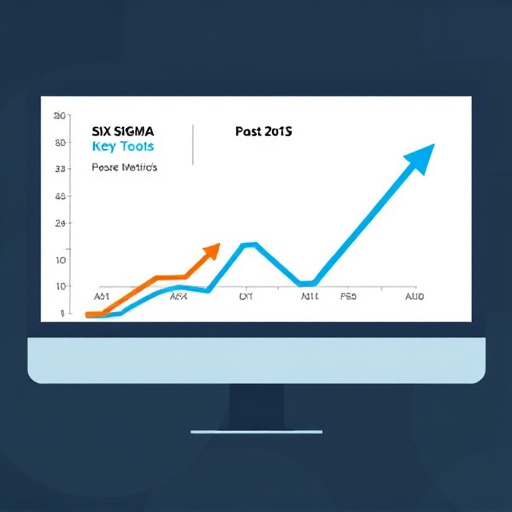Root Cause Analysis (RCA) is a critical component of quality improvement methodologies, particularly Six Sigma, focusing on identifying fundamental problem causes to prevent future occurrences. Powerful tools like Fishbone diagrams and the 5 Whys technique facilitate this analysis by visually categorizing potential causes and probing deeper into cause-and-effect relationships through repeated "why" questions. These tools enable data-driven decision-making, expedite problem solving, and drive continuous improvement in various business operations, fostering a culture of process excellence. Integrating these Six Sigma Key Metrics enhances organizations' ability to gain comprehensive insights into their processes and achieve efficiency.
“Uncover the root causes behind complex issues with Root Cause Analysis (RCA), a powerful problem-solving methodology. This article guides you through essential tools like Fishbone Diagrams, a visual representation of problems and their multifaceted origins, and the 5 Whys technique, which asks ‘why’ five times to reach the core issue.
Learn how these techniques, combined with Six Sigma Key Metrics, offer a comprehensive approach to identifying and eliminating defects. Discover the art of streamlining processes and driving continuous improvement.”
- Understanding Root Cause Analysis: The Core Concept
- Fishbone Diagrams: Visualizing the Problem and Its Causes
- Unlocking the Power of the 5 Whys Technique
- Integrating Fishbone Diagrams and 5 Whys with Six Sigma Key Metrics
Understanding Root Cause Analysis: The Core Concept

Root Cause Analysis (RCA) is a critical process within quality improvement methodologies, such as Six Sigma, aimed at identifying the fundamental reasons behind a specific problem or defect. It goes beyond merely addressing symptoms by delving into the underlying causes to prevent recurrence. The core concept involves using structured tools and techniques to analyze data, gather insights, and make informed decisions to enhance processes and improve overall quality.
Fishbone diagrams and the 5 Whys technique are powerful Six Sigma key metrics and tools for conducting RCA. Fishbone diagrams visually represent potential causes of a problem by categorizing them into different branches, making it easier to identify contributing factors. Meanwhile, the 5 Whys method involves asking “why” repeatedly to probe deeper into the cause-and-effect relationship until the root cause is uncovered. These tools empower teams to make data-driven decisions, solve complex issues efficiently, and drive continuous improvement in various business operations.
Fishbone Diagrams: Visualizing the Problem and Its Causes

Fishbone diagrams, a visual problem-solving tool, are an effective way to map out potential causes behind a specific issue or problem. This powerful technique is one of the key metrics and tools in the Six Sigma methodology, designed to help businesses identify complex root causes systematically. By depicting a ‘fishbone’ structure, with the main problem at the head and various potential factors branching out, it visualizes the entire system and its contributing elements.
This method encourages teams to think holistically about the problem, considering all aspects that might influence it. Each branch of the diagram represents a different category or aspect, such as materials, equipment, processes, people, environment, or design. This structured approach facilitates thorough analysis, enabling faster decision-making and the implementation of effective solutions based on the identified root causes.
Unlocking the Power of the 5 Whys Technique

The 5 Whys technique is a powerful tool within the Six Sigma methodology, designed to uncover root causes behind issues or problems. By asking “why” repeatedly, teams can delve deep into the underlying factors contributing to a specific outcome. This method is particularly effective in identifying hidden causes that might not be immediately apparent. Each “why” question aims to drive more insight, ensuring a comprehensive analysis.
As a key metric for improving processes and decision-making, the 5 Whys technique complements Fishbone diagrams, another valuable Six Sigma tool. Together, they offer a structured approach to problem-solving, enabling organizations to make data-driven decisions and continuously enhance their operations. This strategic combination of visual tools and inquisitive questioning fosters a culture of continuous improvement.
Integrating Fishbone Diagrams and 5 Whys with Six Sigma Key Metrics

Fishbone diagrams and the 5 Whys are powerful tools within the Six Sigma methodology, offering a structured approach to identifying root causes of problems. By combining these techniques with the strategic focus of Six Sigma Key Metrics, organizations can gain a comprehensive understanding of their processes and drive continuous improvement.
The Fishbone Diagram, with its visual layout, helps to categorize and analyze potential causes, making it easier to identify the key factors influencing a particular issue. Meanwhile, the 5 Whys technique involves asking why a problem exists five times, encouraging deeper exploration of the root cause. Integrating these tools with Six Sigma Key Metrics allows for data-driven decisions, ensuring that improvements are measured against specific performance indicators. This holistic approach enhances the effectiveness of root cause analysis and fosters a culture of process excellence throughout an organization.
Root Cause Analysis (RCA) is a powerful tool for any organization aiming to improve efficiency and quality. By combining Fishbone Diagrams, which visually map out potential causes, with the 5 Whys technique to probe deeper into those causes, teams can uncover the true root issues. Integrating these methods with Six Sigma Key Metrics provides a comprehensive approach to problem-solving, ensuring that solutions are data-driven, sustainable, and aligned with overall business goals. These tools and techniques empower organizations to make informed decisions, enhance processes, and ultimately drive success in today’s competitive market.
